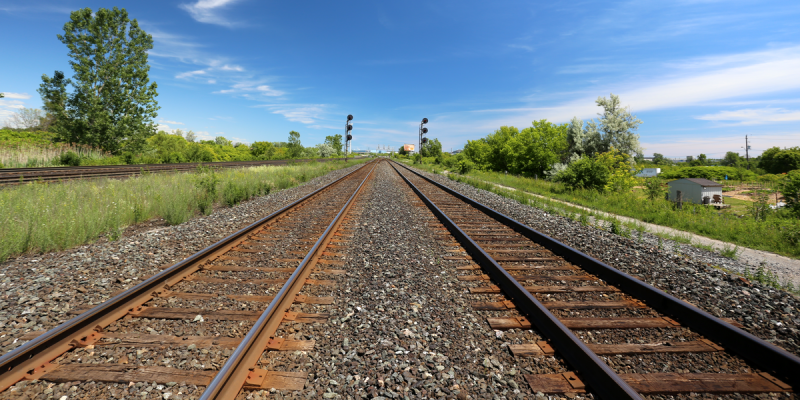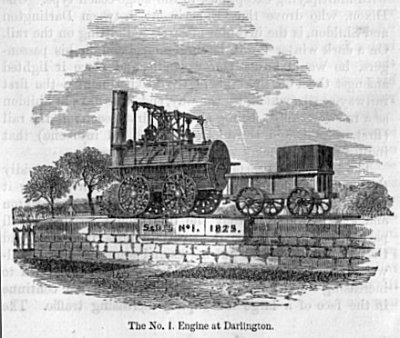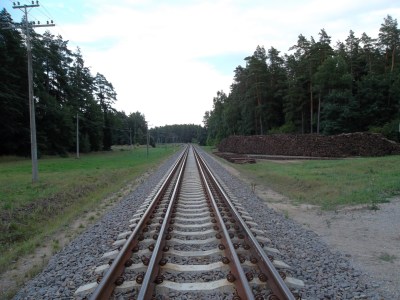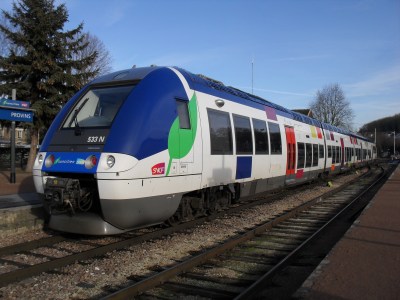

Grain Stuck In Ukraine: The Fragmented Nature Of Modern-Day Railways
source link: https://hackaday.com/2022/06/23/grain-stuck-in-the-ukraine-the-fragmented-nature-of-modern-day-railways/
Go to the source link to view the article. You can view the picture content, updated content and better typesetting reading experience. If the link is broken, please click the button below to view the snapshot at that time.
Grain Stuck In Ukraine: The Fragmented Nature Of Modern-Day Railways

The war in Ukraine has upset the global food market, and the surprising reason is not that Ukrainian wheat isn’t being harvested, but rather that it can’t leave the country. With Russia blockading sea ports, the only way out for Ukrainian grain is by train. And this exposes the long-hidden patchwork of railway tracks and train standards: trains can’t simply cross the border from Ukraine to Poland on their way to a sea port because the tracks don’t match.
Even beyond the obvious issues of connecting differently sized physical railway tracks — the track gauge — there are different signaling systems, different voltages for electrical trains, different loading and structural gauges, and so on. In Europe today, the political history of the past few hundred years can still be traced back using its railroads, with some parts of the European Union still on 1,520 mm Soviet-standard gauge, rather than the 1,435 mm Standard Gauge, which is also known as Stephenson Gauge, European Gauge, etc.
These complications explain why for example with the current war in Ukraine its railways into the rest of Europe aren’t used more for transporting grain and other cargo: with Ukraine using 1,520 mm gauge, all cargo has to be transferred to different trains at the Ukraine-EU border or have bogies swapped. Although some variable gauge systems exist, these come with their own set of limitations.
In light of this it’s not hard to see why standardizing on a single international or even European track gauge is complicated due to having to replace or adapt all tracks and rolling stock, even before considering the aforementioned voltage and signaling differences. All which may lead one to wonder whether we’ll ever see a solution to this historically grown problem.
Engineering History
Minecart from the 16th century with wooden tracks, found in Transylvania. (Credit: LoKiLeCh)
The concept of a trackway is an ancient one, with the Diolkos slipway in Greece being postulated as one of the first ones. Although the exact configuration and presence of grooved tracks is still debated in archaeological circles, Diolkos (Δίολκος, from the Greek dia διά, “across”, and holkos ὁλκός, “portage machine”) was constructed during the 6th century BCE to enable rapid transport of ships across the Isthmus land bridge and remained in use for over five-hundred years, according to historical reports and supported by recent studies of the beachrock, e.g. Saitis et al. (2022).
Over the past thousands of years, the use of tracks to guide wagons, carriages and carts along a defined path became ever more common and popular, from mining and transport, to industrial use, with human and animals providing the propulsion. Eventually large-scale track systems for transport would commence with the arrival of the steam engine and subsequent diesel-electric and electric trains that’d define railways as the defining transforming feature of the 19th century and beyond.
Unsurprisingly, each railroad company would initially set its own track gauge and other standards, with rolling stock essentially being limited to the tracks of the railroad company that had purchased it. This situation lasted until governments began to enforce a standard gauge, such as with the Railway Regulation (Gauge) Act of 1846 in the United Kingdom of Great Britain and Ireland.
The No. 1 engine developed by George Stephenson for the Stockton and Darlington Railway, called ‘Locomotion’. (Source: Lives of the Engineers, 1862)
This act enforced the use of the then most popular track gauge in Great Britain which was the 1,435 mm track that was used by George Stephenson’s Stockton and Darlington railway in addition to other railways constructed around that time. Interestingly, this same act also enforced the use of a 1,600 mm gauge standard in Ireland, which is the reason why to this day Ireland and Northern Ireland use this track gauge.
This British 1,435 mm standard became adopted as what is known as ‘Standard Gauge‘ today, and would end up being adopted across much of Europe, North America and other parts of the world. Stephenson himself mentioned that he would have liked to have a broader gauge than 1,435 mm, and even today somewhere around forty percent of commercial railways are using another gauge, generally a type of ‘broad gauge’, as anything wider than standard gauge is referred to.
Fixing History
Dual gauge track (1520 and 1435 mm) in Lithuania between Mockava and Šeštokai, part of “Rail Baltica” (Credit: Gedminas)
At this point in time, there are eight commonly used track gauges, with standard gauge followed by the Soviet-era 1,520 mm standard at over 15% and Europe featuring also the meter gauge (1,000 mm, Spain and Switzerland), Iberian gauge (1,668 mm, Portugal and Spain), the older 1,524 mm Soviet standard (Estonia, Finland), the aforementioned 1,600 mm gauge in Ireland and Northern Ireland. Only the 1,676 mm gauge standard is not present in Europe.
While the obvious way to fix this situation is to either replace all tracks and rolling stock, or to simply accept that international trains are impossible, there are a few intermediate solutions. A common solution is that of dual and mixed gauge tracks, which add one or more additional tracks to match whichever gauges the rolling stock can use. Of course, this still adds significant cost and is only worth it if rolling stock with all of these gauges regularly use the tracks.
Gauge changeover at León (Credit: INECO)
Another solution is that of variable gauge, which involves a bogie equipped with axles that can change their track gauge automatically using a gauge changing station that triggers the gauge changing mechanism as the bogie moves through it. This is how trains between Spain and France move between these countries’ different rail networks. Limitations here are that no variable gauge system supports more than two gauges, and variable gauge bogies limit the weight that can be placed on them, making them unsuitable for freight traffic.
Finally, there is bogie exchange, which involves swapping the bogies of the rolling stock. This is still in limited use for mostly freight trains, but does require the disconnecting and reconnecting of control and other lines, and can take about ten minutes to over an hour per rail car, which is why this approach has lost ground to variable gauge axle systems that do not require such specialist intervention. At this point in time, it’s still commonly used for trains between Ukraine and nations like Poland and Romania.
No Quick Fix
Even though there is a gradual move towards converting all of Europe to standard gauge, this is a slow, arduous process. While for new lines the choice to use 1,435 mm standard gauge is obvious – especially when the rolling stock can use either the old or new gauge as is the case in Spain – not every country has this easy way out. For former USSR nations like Lithuania and others, the ‘Rail Baltica’ proposal foresees switching from the old Soviet-era tracks to new tracks using standard gauge, which is a massive undertaking that has left many unconvinced.
Ukrainian Minister of Finance Oleksandr Kava noted some of the issues related to loading gauge, as rolling stock in Ukraine can be wider than is allowed in the EU outside of Romania and Bulgaria, and axle load is also far higher within the Ukraine than is allowed on EU tracks. This hearkens back to Stephenson’s commentary in the 19th century, about the deficiencies of the bureaucratically selected standard gauge, and raises the uncomfortable realization that switching from ‘broad gauge’ to ‘standard gauge’ may actually be a downgrade, rather than an improvement.
However, much like the proverbial freight train with cut brake lines hurtling ahead with abandon, it seems that at least for Europe the 1,435 mm standard is unstoppable. It’ll be used for compatibility sake, regardless of whether it is in fact the best choice. In a similarly pragmatic fashion as when it comes to loading gauge and other aspects that affect international trains, the main priority appears to be to ensure that the trains can travel where they are needed.
Fortunately the other compatibility issues like the different electrical voltages used across electrified rail networks are significantly easier to solve.
The Easy(ish) Problems
Diesel-electric SNCF Class B 82500, capable of working with 1.5 kV DC and 25 kV AC overhead systems.
The electrification of rail networks occurred almost in as haphazard a fashion as the growth of track gauges, but compatibility issues have been essentially solved using multi-system locomotives. These can accept power input from e.g. overhead wiring, with voltages ranging from low voltage (750 V DC in Europe) systems to the multi-kV systems (up to 25 kV AC in Europe) that are in use today. Some of these locomotives are also diesel-electric units which can run on non-electrified tracks.
Generally, running such a multi-system locomotive requires no input from the driver, with automatic switch-over between power sources and adaptation to the voltages. Where things get a lot more complicated is with the railway signaling systems, which features different traffic control systems that in the case of e.g. automatic block signaling (ABS) requires that the train’s communication systems are compatible with the system, as well as the safety systems that are to prevent accidents in case of human error.
Regardless, these are fairly straightforward problems that only affect the rolling stock and can be fairly easy retrofitted into existing locomotives.
The Bottlenecks Of Today
In an ideal world all of Europe would be using a standard gauge that an engineer like George Stephenson would be happy with, and which would allow Ukraine to move the stored grain from its storage facilities to the EU’s harbors with zero complications and building of intermediate storage facilities as suggested in the current proposal. Unfortunately, this is not the world we live in.
Despite the generally excellent state of rail networks in Europe relative to many other regions, it bears keeping in mind the flaws and bottlenecks of the current railway system, and to look for ways that we can meaningfully improve on it. Even if generally these flaws are mostly an annoyance due to extra wait times and expenses, sometimes it means that Ukrainian grain becomes painfully stuck behind a gauge break, with the severe consequences which we are seeing this year.
[Header and Thumbnail photo: “Train Rail Tracks” by Evan Delshaw.]
Recommend
About Joyk
Aggregate valuable and interesting links.
Joyk means Joy of geeK




